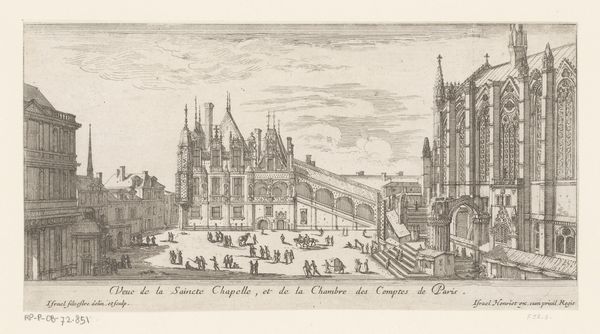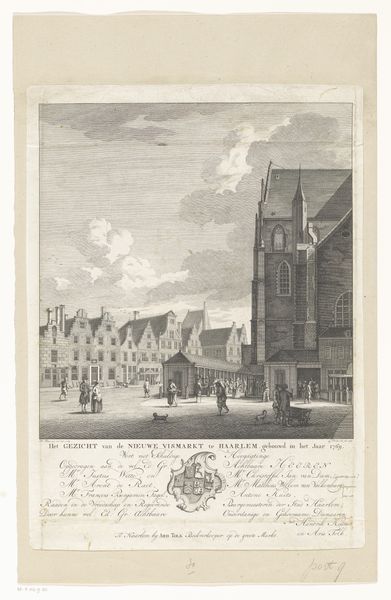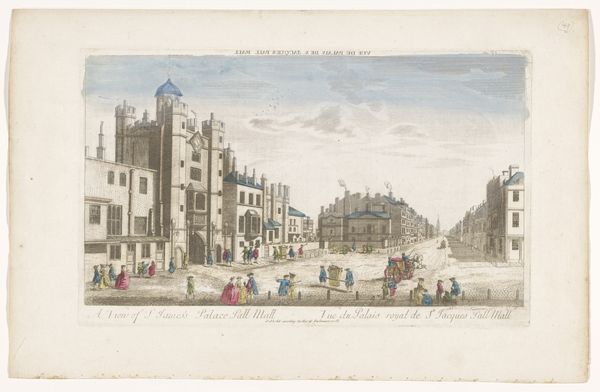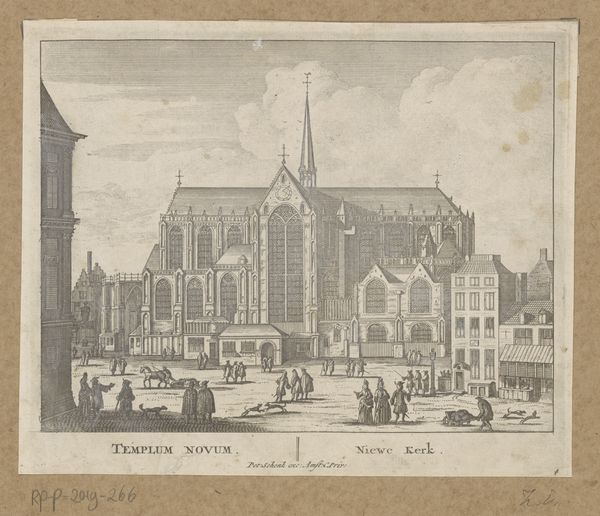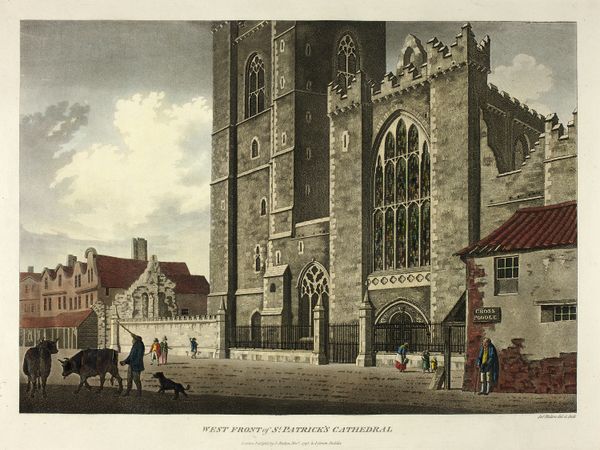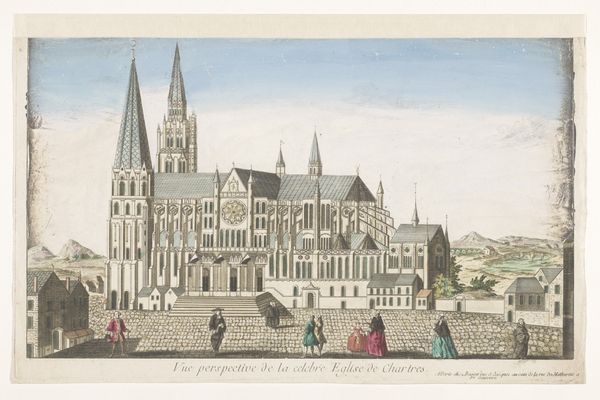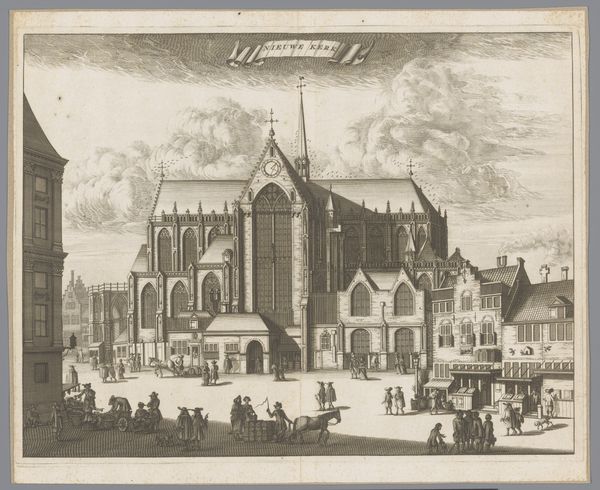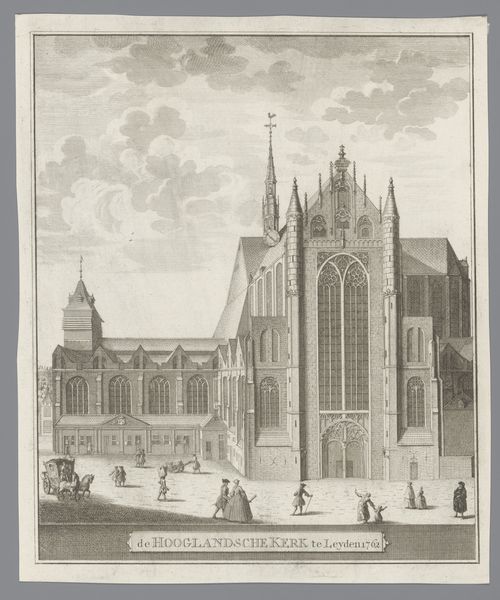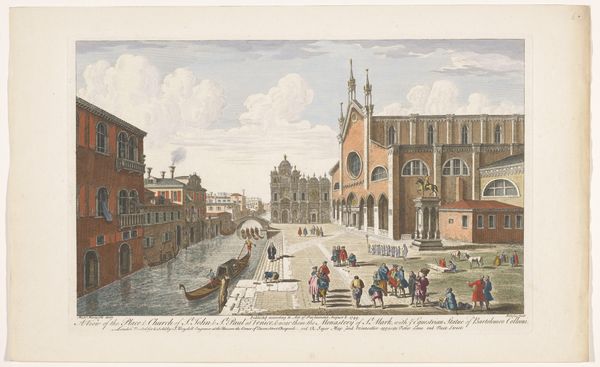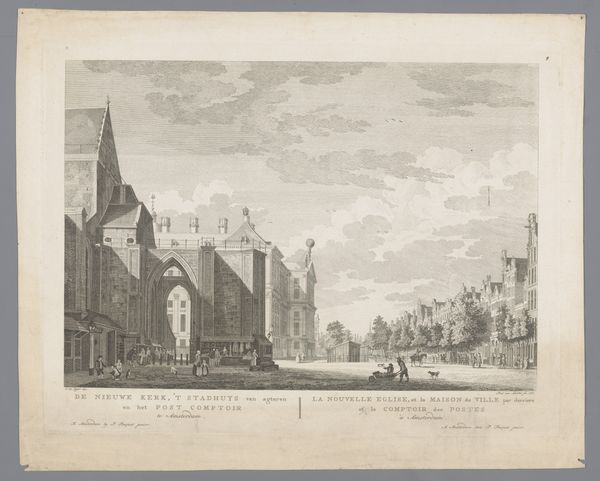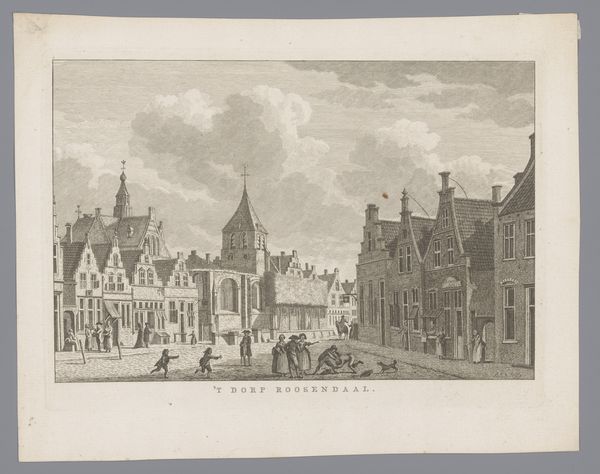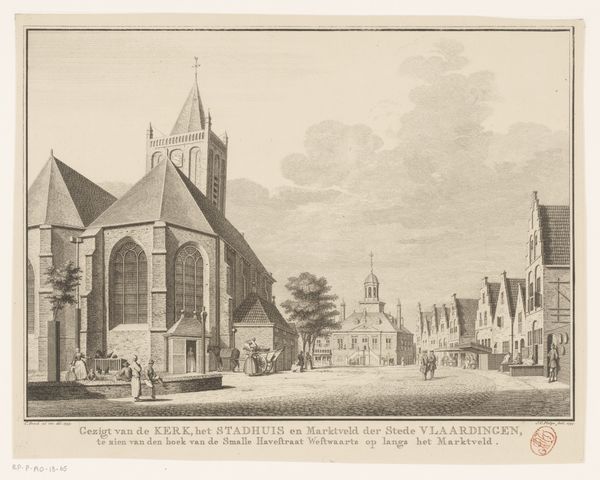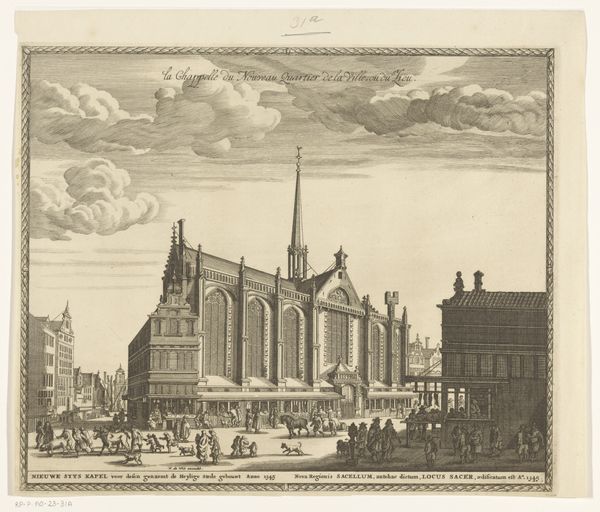
Gezicht op de Westminster Abbey en de kerk St Margaret's te Londen 1745 - 1775
0:00
0:00
print, engraving, architecture
#
baroque
# print
#
landscape
#
cityscape
#
engraving
#
architecture
Dimensions: height 265 mm, width 407 mm
Copyright: Rijks Museum: Open Domain
Curator: Ah, look, this print whispers of another time. Editor: Yes, I feel like I've stepped onto a film set, something whimsical, perhaps even slightly haunted by the past. Curator: Let’s take a moment to look at Jean-François Daumont's engraving titled "View of Westminster Abbey and St. Margaret's Church in London," dating roughly between 1745 and 1775. The Rijksmuseum is lucky to have this cityscape in its collection. It's a fascinating intersection of Baroque aesthetics and a burgeoning interest in urban landscapes. Editor: Baroque… that rings true! It’s the dramatic flourish of those towering steeples against what looks like a pastel sky. I wonder about the people populating the square. What were they thinking about back then, rushing or meandering by, their lives intersecting, now lost to time? It has got kind of theater vibes. Curator: It’s also fascinating how Daumont’s piece highlights the Abbey as a social and political space. In the mid-18th century, the area teemed with political gatherings, debates, and certainly societal pageantry, often tied to matters of gender and class that were being questioned as enlightenment ideas gained traction. Editor: Right, so many stories interwoven in a single snapshot! It makes me think about perspective, about who is seen and unseen in this carefully crafted tableau. How conscious was Daumont about the politics of representation and, more profoundly, about constructing power in it, I wonder. Curator: Considering it’s an optical view meant for entertainment, I suspect social commentary was secondary. Nevertheless, it’s unavoidable to not see the work with contemporary lenses. What does this work evoke to you now? Editor: In essence, it prompts me to remember our transient reality. I want to know more about those little figures. But time makes all this blurry and gives a sense of beauty as a distant echo. What about you, any thoughts? Curator: It prompts thoughts of how we continuously reimagine history, re-evaluate structures of power in the name of the present and future. Editor: Agreed. Maybe all that remains is this desire for conversation… with art and with one another, across time itself.
Comments
No comments
Be the first to comment and join the conversation on the ultimate creative platform.
